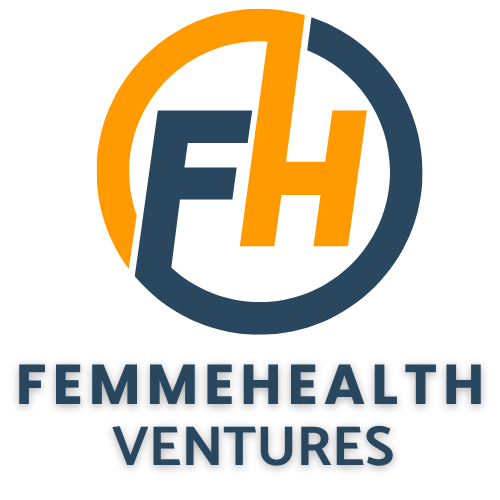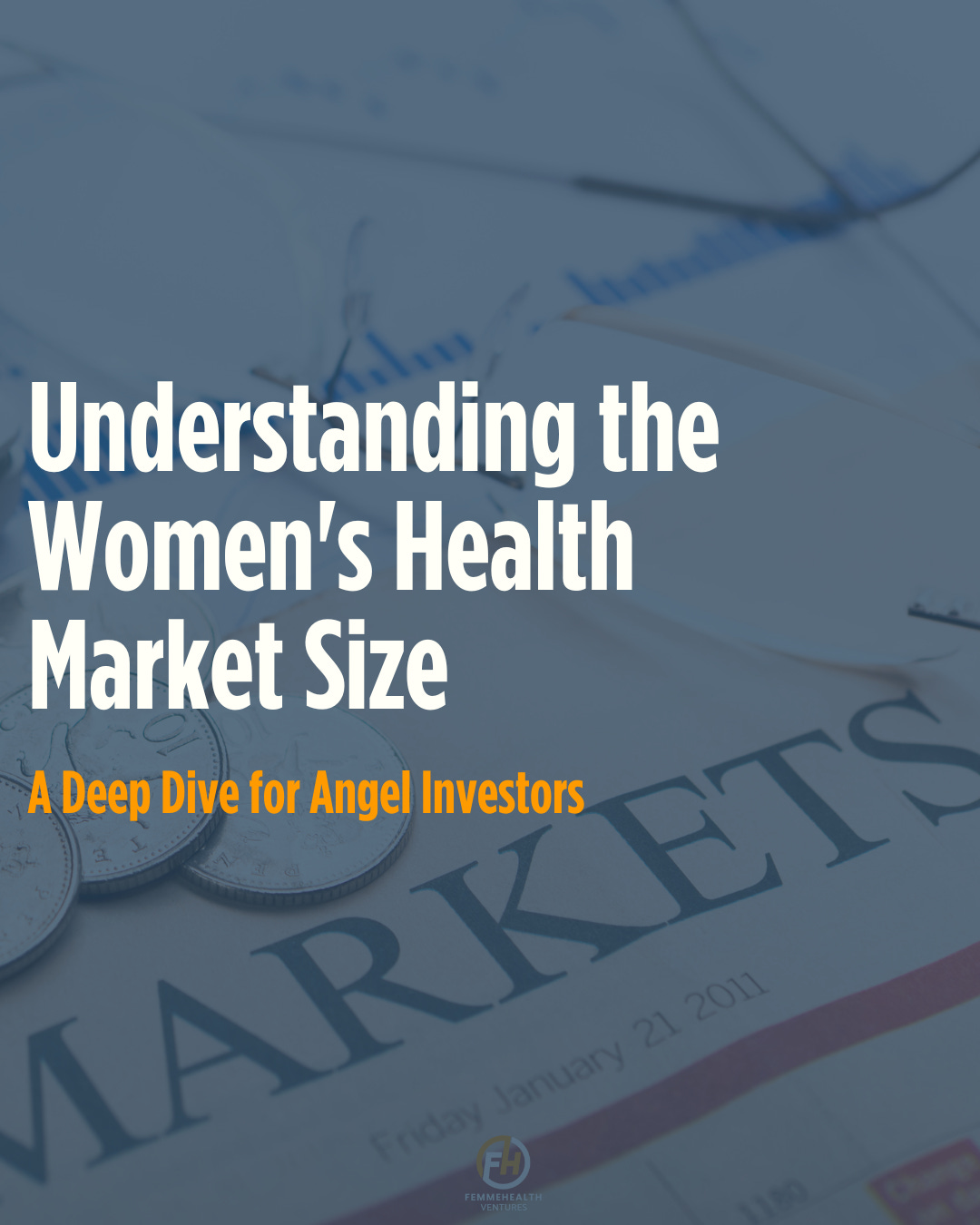Women’s health is one of the most undervalued markets in healthcare investing. Despite women making 80% of healthcare decisions, the industry receives only ~4% of healthcare R&D funding. This gap may present a huge financial opportunity for investors who can quantify the true market potential of emerging subsectors like menopause tech, fertility solutions, and digital women’s health.
Welcome to the latest issue of the Femmehealth Ventures Publication—your trusted source for insightful analysis of femtech innovations through an investor's lens, helping you identify the latest opportunities in women's health technology.
Why Market Sizing is Critical for Investors
The women’s health market presents billion-dollar opportunities, yet many startups struggle to secure funding.
The global menopause market is estimated at $600 billion, but capital remains scarce
The fertility industry is worth $50 billion, yet insurance and regulatory barriers shrink the true accessible market.
AI-driven women’s health solutions are projected to reach $13 billion by 2030, yet few investors know how to evaluate these innovations properly.
For investors, the challenge isn’t just identifying big numbers. It’s understanding which markets are truly scalable and how to apply traditional market sizing frameworks (TAM, SAM, SOM) to women's health.
💡 The key to success? Looking beyond surface-level valuations to uncover real, investable opportunities where capital can drive both impact and returns.
In this article, we will walk through:
How to assess the real market size for menopause, fertility, and AI-driven health solutions
Investor case studies: How startups transformed niche markets into high-growth investment opportunities
Hidden growth drivers shaping the future of women’s health
Investor checklist: The key questions to ask before making an investment
Let’s dive in.
Beyond the Numbers: Why Market Sizing is Different in Women's Health
Unlike established sectors like pharmaceuticals or biotech, women's health markets require alternative valuation methods due to:
✅ Fragmented Data: Many subsectors lack well-defined market studies.
✅ Regulatory Barriers: Reproductive health and menopause solutions face different approval pathways across countries.
✅ Cultural and societal norms: Stigma surrounding topics like menopause and fertility impacts consumer behaviour and adoption rates.
Because traditional market sizing models rely on past data and existing industry structures, they fail to capture the true potential of women's health markets. Adjustments to traditional market sizing methods are therefore needed in Women’s health to account for latent demand, emerging innovation, and systemic underfunding.
Market Sizing Framework: TAM, SAM, and SOM in Women's Health
To quantify opportunities effectively, investors must break down market sizing into three levels:
1. Total Addressable Market (TAM): The Global Opportunity
Definition: The entire potential market for a product, assuming no competition or barriers.
Why It Matters: It sets the upper limit of an investment’s revenue potential.
Challenges in Women's Health: Lack of standardised market data, high stigma, and low insurance coverage in many regions.
💡 Example: Menopause Market TAM
1.2 billion women will be in menopause by 2030.
The global menopause market is valued at $600 billion, covering:
Prescription and OTC treatments
Telehealth solutions
Wearables and symptom tracking
Lifestyle and wellness products
📝 Investor Tip: Investors should question TAM assumptions—not all identified revenue streams will be accessible due to regulatory constraints, market maturity, and adoption rates.
2. Serviceable Addressable Market (SAM): The Realistic Opportunity
Definition: The portion of the TAM that a company can realistically serve, considering factors like geography, competition, and regulations.
Why It Matters: It refines the realistic revenue potential based on market conditions.
Challenges in Women’s Health: Many subsectors lack widespread insurance reimbursement, limiting accessibility.
💡 Example: Fertility Market SAM
The global fertility market is valued at $50 billion.
But regulatory and insurance restrictions limit the U.S. fertility services SAM to $10 billion—primarily covering:
Employer-sponsored fertility benefits
IVF and egg freezing services
At-home fertility testing
📌Case Study: OvulaRing in Germany (Insurance-Covered FemTech)
OvulaRing was developed to address the complexities of cycle tracking for women struggling with fertility challenges.
Unlike traditional ovulation prediction methods, OvulaRing is a continuous biosensor that provides real-time data on hormonal fluctuations, giving women and doctors a more accurate picture of fertility patterns.
Initially, OvulaRing faced barriers to consumer adoption due to out-of-pocket costs. However, a major breakthrough came in 2021, when three statutory health insurers in Germany—AOK PLUS, BIG direkt, and HEK—approved nationwide reimbursement for up to 12 months of usage.
This decision significantly expanded the Serviceable Addressable Market (SAM), making OvulaRing accessible to a broader population while demonstrating the financial viability of insurance-backed femtech solutions.
📝 Investor Tip: Startups leveraging regulatory shifts (e.g., government reimbursement expansions) often increase their SAM significantly.
3. Serviceable Obtainable Market (SOM): The Captureable Share
Definition: The portion of SAM a company can realistically capture based on business model, competition, and go-to-market strategy.
Why It Matters: It helps investors estimate short-term revenue projections and scalability potential.
Challenges in Women’s Health: Market penetration depends on education, consumer awareness, and distribution strategy.
💡 Example: Menopause Tech SOM (U.S. Market)
TAM: $600 billion
SAM: $30 billion (U.S. digital menopause market)
SOM: $1 billion (women aged 45-60 using digital health platforms)
📝 Investor Tip: SOM is a leading indicator of early success. Investors should prioritise companies with strong traction, partnerships, and growth strategy.
How Institutional Investors Adjust Market Sizing in Women’s Health
VCs and PE firms investing in women’s health often adjust traditional TAM, SAM, and SOM models by factoring in:
Latent Demand & Unmet Needs – Instead of relying on historical spending, investors analyze how many women lack access to solutions.
Regulatory & Insurance Changes – Anticipating policy shifts and reimbursement expansions increases real market size.
Cultural Shifts – Markets previously constrained by stigma (e.g., menopause, sexual health) can expand rapidly as awareness grows.
Adjacent Market Comparisons – Investors benchmark growth trends from related sectors like mental health, digital health, and longevity tech.
💡 Example: VC Firm Investing in Menopause Care
A VC firm looking at menopause care does not rely on historical spending because the market has been ignored for decades. Instead, they estimate future TAM by tracking employer benefit expansions, direct-to-consumer adoption, and insurance reimbursement trends.
Market Dynamics: Trends Shaping Women's Health Investment
1. The Rise of B2B Models (Corporate Benefits & Insurers)
Employers are increasingly offering women's health benefits (fertility, menopause, maternal care).
B2B adoption accelerates market entry, reducing customer acquisition costs.
📌 Case Study: Kindbody (Fertility Benefits)
Started as a direct-to-consumer (DTC) fertility clinic.
Pivoted to a B2B model, selling fertility benefits to corporations like Google and Walmart.
Raised $190M+, expanding employer-backed fertility care.
2. Digital Health & AI-Driven Solutions
AI and telehealth are bridging gaps in diagnosis and treatment.
Insurance adoption of digital health is growing, boosting SAM and SOM.
📌 Case Study: Femtech AI in Menopause
Companies like Elektra Health and Alloy are leveraging AI for personalized menopause care.
The shift from DTC to reimbursed digital health services expands SAM.
3. The Role of Reimbursement & Insurance Expansion
Reimbursement policies are a key driver of SAM expansion.
Startups integrating with insurers have higher scalability potential.
📌 Case Study: Progyny (Publicly Traded Fertility Benefits Platform)
Reimbursement model allowed rapid adoption by employers and insurers.
IPO valuation reached ~$2B—demonstrating demand for scalable insurance-backed models.
Investor Considerations: Evaluating Women’s Health Startups
Investors should assess:
✅ Scalability: Can the company expand beyond its initial SOM?
✅ Regulatory Environment: Are there upcoming changes that could expand market size?
✅ Competitive Positioning: Does the company have a unique edge (IP, partnerships, technology)?
✅ Go-to-Market Strategy: Does the startup use B2B partnerships, direct sales, or hybrid models?
💡 Investment Red Flags:
🚩 Niche TAM with no path to scale
🚩 Regulatory barriers limiting reimbursement or expansion
🚩 Lack of competitive differentiation
How to Spot High-Value Investments
Women’s health is a long-overlooked investment opportunity with significant upside.
Historically underfunded, but demand is growing.
Early investors can capture first-mover advantage in high-growth segments.
Market sizing in women’s health requires more than just TAM calculations.
Investors must evaluate SAM and SOM based on insurance, regulation, and adoption trends.
The biggest opportunities lie in models leveraging AI, employer benefits, and insurance expansion.
Companies integrating tech, reimbursement, and data-driven insights will scale faster and capture larger market share.
Next Steps: If you’re an angel investor, ask:
✅ Is this market expanding?
✅ Does the startup have a clear path to SOM growth?
✅ How will they differentiate against competition?
Women’s health investing isn’t just impactful—it’s a financially smart move.
Until next time…
Ways to Connect with FemmeHealth Ventures
Sign-up for FemmeHealth Ventures newsletter, which is published weekly on Sundays
Disclaimer
The content in this newsletter is for informational purposes only and does not constitute financial, investment, legal, or medical advice. Opinions expressed are those of the author and may not reflect the views of affiliated organisations. Readers should seek professional advice tailored to their individual circumstances before making decisions. Investing involves risk, including potential loss of principal. Past performance does not guarantee future results.







